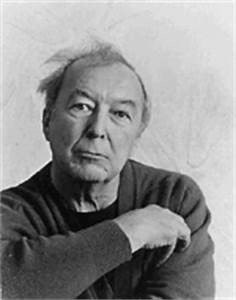Jasper Johns born in 1930 in Augusta, Georgia, Jasper Johns grew up in rural South Carolina. The paintings of his deceased grandmother, hung in his grandfather's house where he lived until the age of nine, provided his only exposure to art in his childhood. Johns began drawing at a very young age, with a vague intention of wanting to become an artist. In 1951
Jasper Johns born in 1930 in Augusta, Georgia, Jasper Johns grew up in rural South Carolina. The paintings of his deceased grandmother, hung in his grandfather's house where he lived until the age of nine, provided his only exposure to art in his childhood. Johns began drawing at a very young age, with a vague intention of wanting to become an artist. In 1951, Jasper Johns born in 1930 was drafted into the army and spent two years in service during the Korean War at Fort Jackson, South Carolina, and in Sendai, Japan. Upon returning to New York after an honorable discharge from the army in 1953, Johns met Robert Rauschenberg, who ushered him into the art scene there. The two artists shared an intense relationship, both romantic and artistic, from 1954 to 1961. Johns noted that he "learned what an artist was from watching [Rauschenberg]." The two artists eventually lived together, had neighboring studio spaces, and formed "the main audience for each other's work." Through their constant contact, they deeply influenced each other's artwork, exchanging ideas and techniques that broke from Abstract Expressionism. Johns received his first solo exhibition in 1958, after Rauschenberg introduced him to influential gallery owner Leo Castelli. The solo show featured Johns' groundbreaking painting Flag (1955), as well as other previously unseen works from the 1950s.
As the Pop art movement grew around him, Johns left behind the colorful paintings filled with familiar gestures and images and turned to a darker palette. That year Rauschenberg acquired a studio space in Florida, and two years later, Johns took a studio on Edisto Island in South Carolina. Although they still spent some time together in New York, both increasingly went their own separate ways. The end of such an influential and formative relationship had a huge emotional impact on Johns, and he immersed himself in his work as well as the linguistic philosophic works of Ludwig Wittgenstein and the poetry of Hart Crane. Throughout the 1980s and 1990s, Johns' work took a more introspective turn as he included specifically autobiographical, introspective content in his work. Johns became increasingly more reclusive in the decades after his break from Rauschenberg, almost never giving interviews, and maintaining a very quiet public persona. As part of the crucial Neo-Dada movement, Johns bridged the aesthetic gap between Abstract Expressionism and Pop art during the late 1950s, but to this day, he continues to expand his subjects, materials, and styles. Pop artists, like Andy Warhol and James Rosenquist, benefitted from Johns' groundbreaking turn to the outside world, which presented everyday objects and mass-produced goods as the subject matter of fine art.
